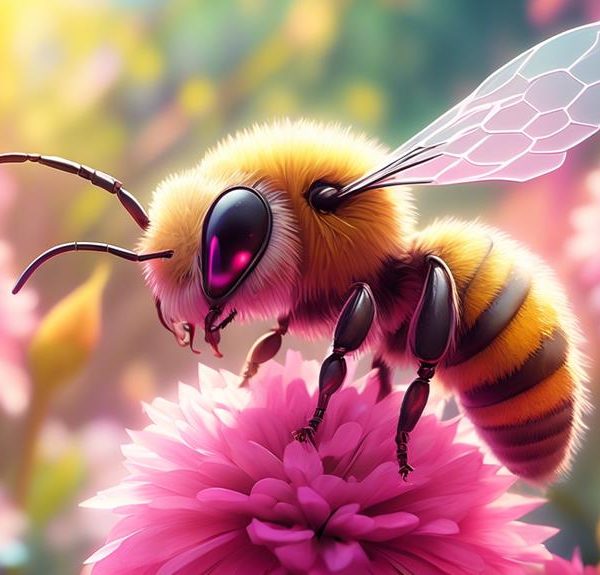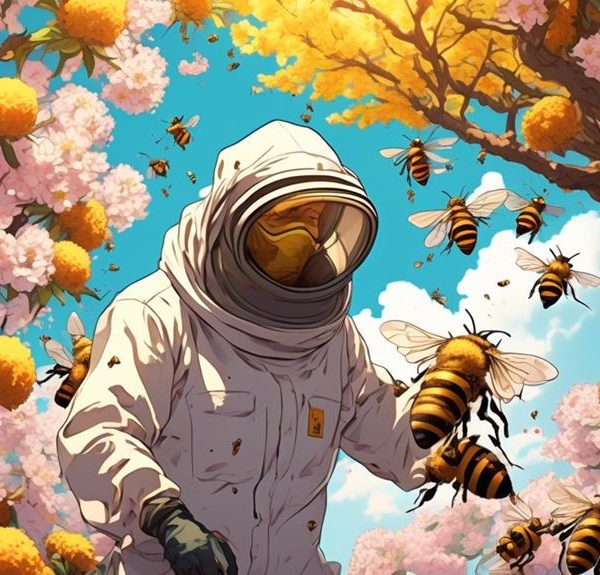Intriguing intricacies of bee mating rituals revealed, including the shocking truth about drones' explosive end – read on for the buzz!
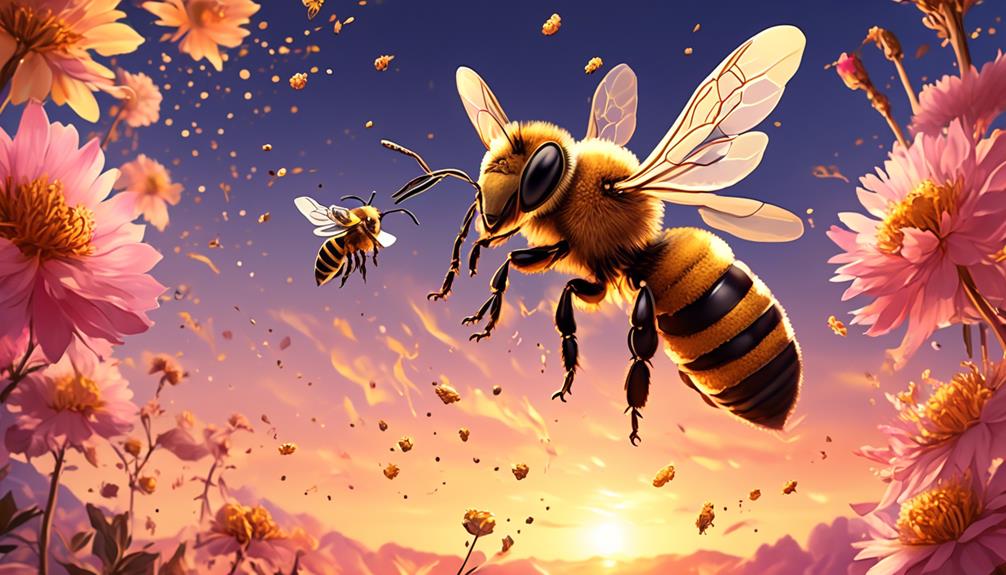
Do Bees Explode When They Mate?
Bumbling bees buzzing by might seem mundane, but have you ever paused to ponder their procreation process? It's a fascinating fact that in the bee world, mating isn't as simple or as safe as it is in many other species.
You've heard the buzz that drones, the male bees, meet a rather explosive end post-mating, but is there any truth to this? Stick around, you're about to uncover some surprising secrets of the apiary world.
Key Takeaways
- The mating ritual of bees involves a dramatic airborne display, with drones competing fiercely to mate with the queen.
- The explosive ejaculation of male drones results in their endophallus rupturing, leading to their dramatic demise.
- Drones have a significantly shorter lifespan compared to worker bees and the queen, and their lifespan ends dramatically once they mate.
- Queen bees mate with multiple drones to ensure genetic diversity within the hive and store collected sperm in a specialized organ called the spermatheca.
The Mating Rituals of Bees
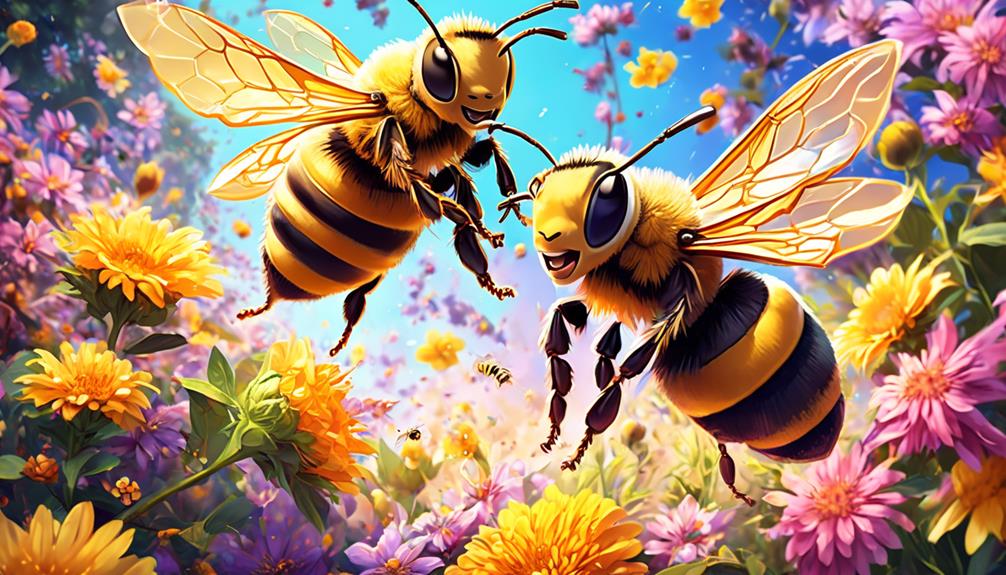
In the intriguing world of bees, the mating ritual unfolds in a dramatic, airborne display, where drones compete fiercely to mate with the queen, often resulting in their explosive demise. Don't be fooled, this isn't hyperbole. The male drone's ejaculation is literally explosive, causing their endophallus to rupture and subsequently leading to their death.
As part of this ritual, you'll find drones congregating in specific areas, known as drone congregating areas (DCAs), waiting for their chance to mate. The queen, on her nuptial flight, will mate with several drones, collecting millions of sperm.
This explosive mating process isn't without purpose. It's a mechanism that ensures the queen is inseminated with the maximum amount of sperm. The drone's endophallus, once detached, acts as a plug, preventing the sperm from other drones from entering.
While it may seem harsh, this process is vital for the continuation of the hive. The queen needs a large quantity of sperm to fertilize the numerous eggs she'll lay throughout her life. So, in essence, the drone's ultimate sacrifice ensures the survival of the hive.
Understanding Drone Bees Lifespan
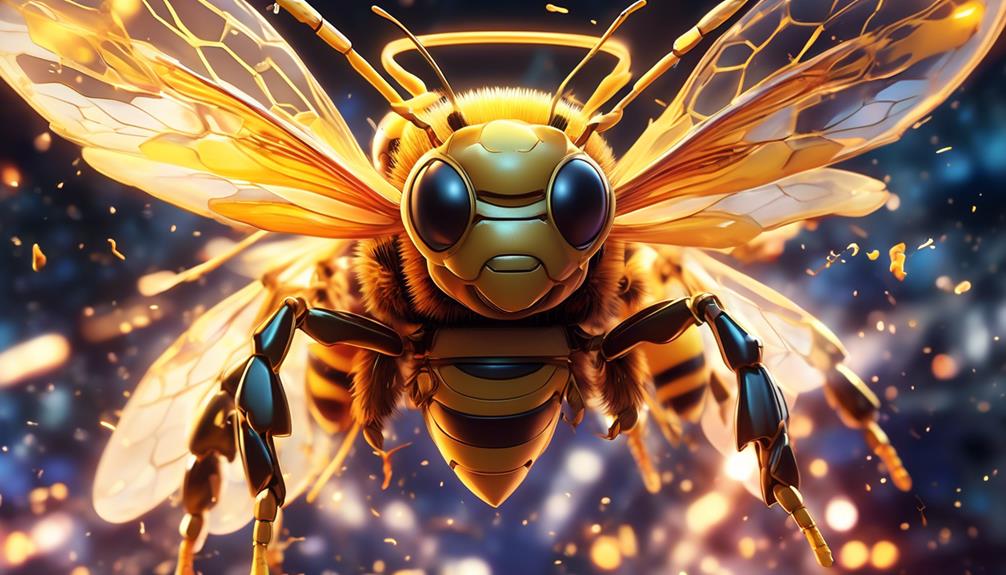
You might find it surprising that the lifespan of a drone bee is significantly shorter than that of worker bees or the queen, primarily due to their explosive mating ritual. Drones are male bees that don't perform the typical tasks of worker bees, such as gathering nectar or pollen. They're purposefully designed for a single act: mating with a new queen.
After hatching, drones live for around 40 to 50 days. In this period, they mature and prepare for mating flights. Their lifespan ends dramatically once they mate, as the process results in a fatal injury. Interestingly, if they don't mate, they'll still die around the same time.
To give you a clearer picture, here's a comparative table:
Bee Type | Average Lifespan |
|---|---|
Drone Bee | 40-50 days |
Worker Bee | 6 weeks – 9 months |
Queen Bee | 2-5 years |
This stark contrast in lifespan is a fascinating aspect of bee biology, reflecting the different roles and duties within the hive. So, while it's a bit gruesome, it's also an essential part of the drone bee's nature.
The Queen Bee's Role in Mating
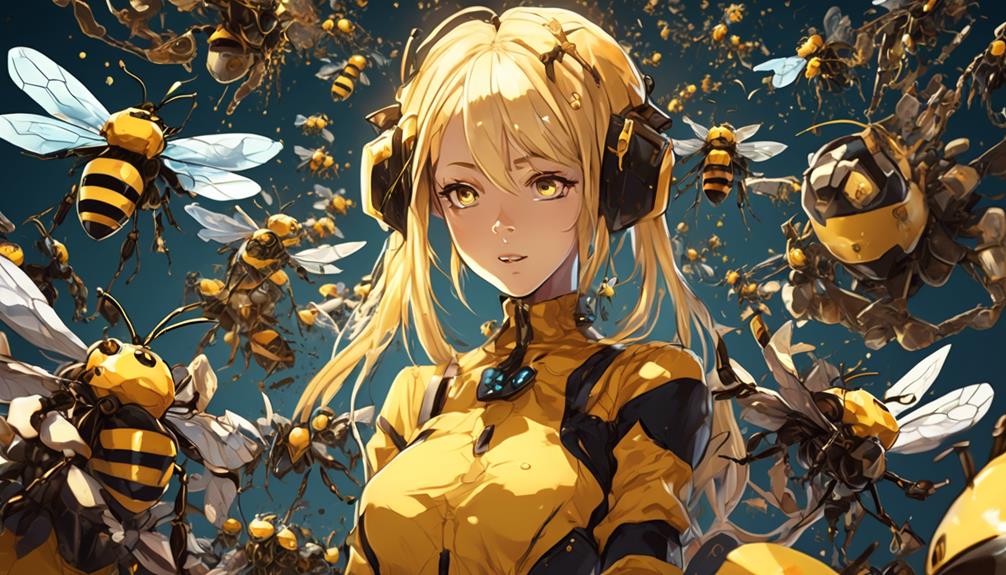
Let's delve into the crucial role of the queen bee in the mating process, where she embarks on a mating flight to mate with multiple drones, a single event that will provide her with all the sperm she'll need for her entire lifespan. This event, typically occurring early in her life, is known as a nuptial flight. In this flight, she'll mate with an average of 12 to 15 drones.
The process is ruthless, yet essential for the colony's survival. The drones, driven by a biological imperative, die almost immediately after mating, their endosoma exploding in the act. You might wonder why she mates with so many drones. It's to ensure genetic diversity within the hive, enhancing its resilience against diseases and environmental changes.
The queen stores the collected sperm in a specialized organ called the spermatheca. She'll use this for years to fertilize millions of eggs, producing worker bees and future queens. If the queen doesn't return from her nuptial flight or fails to mate, it can have dire consequences, leading to the collapse of the entire colony.
In essence, the queen bee's role in mating is pivotal to the continuity and robustness of the bee community.
The Explosive Climax Explained
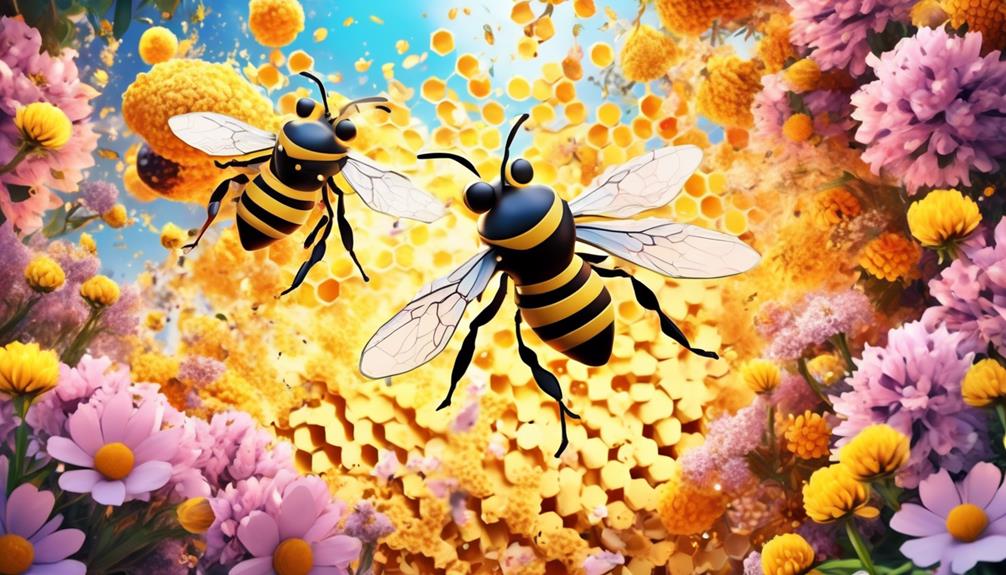
Why does the drone bee's endosoma explode after mating, you might ask? The answer lies in the unique biology of bees and their approach to reproduction. Unlike most males in the animal kingdom, a drone bee's sole purpose is to mate with the queen. He's not built for long term survival, but for an explosive one-time mating event.
Upon mating, the drone bee's endosoma, or reproductive organ, does indeed explode. It's a process known as 'mating sign' and it's as dramatic as it sounds. The endosoma ruptures and stays inside the queen. This ejaculation isn't merely an act of fertilization but also a mechanical lock, preventing other drones from mating with the queen. It's a final act of genetic dominance.
The explosion also spells the end for the drone. Devoid of his endosoma, he dies shortly after. It's a harsh reality, but one that ensures the survival of the strongest genes in the hive. So, while the climax might seem brutal, it's a key component of bee reproduction and survival.
This explosive climax is just a part of nature's grand design.
Implications for Bee Population Dynamics
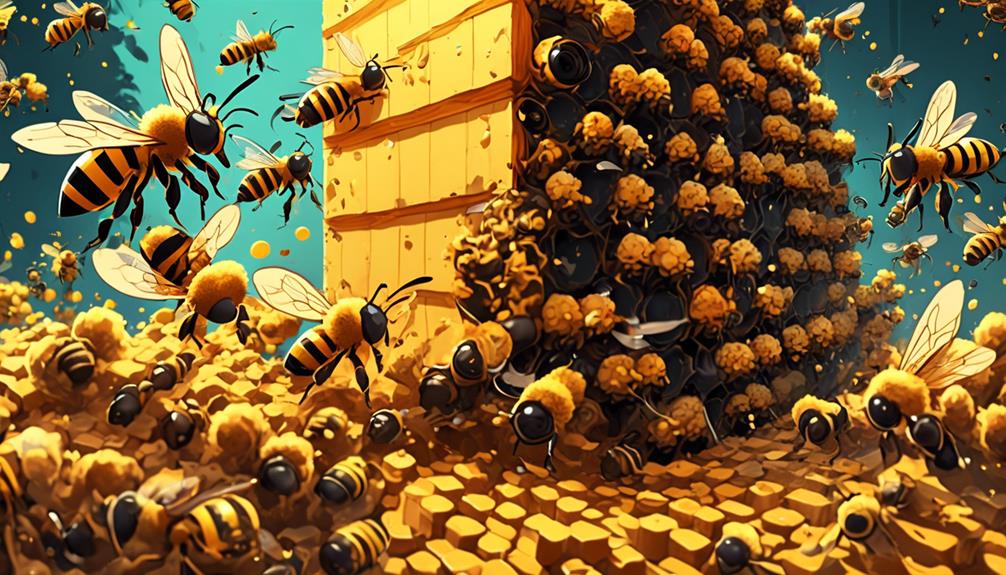
Given this seemingly self-destructive reproductive strategy, it's intriguing to consider the implications for bee population dynamics. This explosive mating process, where male bees die post-mating, affects the drone population, as it's essentially a one-shot opportunity.
In the context of overall hive health, it's not as detrimental as it might seem. Bees operate within a eusocial structure, where the collective's survival outweighs individual longevity. The queen's fertility, ensured by the drone's sacrifice, is paramount to the colony's survival.
However, external factors such as habitat destruction, pesticides, and climate change can exacerbate the impact of this self-sacrificing mating process. If these threats reduce the number of drones faster than they can be replenished, it could destabilize the colony's reproductive capabilities, leading to a decline in population.
This highlights the importance of preserving bee habitats and reducing harmful human activities. You'll understand that the bees' explosive mating isn't the main threat to their existence. Rather, it's the combination of this unique reproductive system and external environmental factors that put bee populations at risk.
Your actions can influence the future of these crucial pollinators.
Frequently Asked Questions
What Happens to the Male Bee After Mating?
After a male bee mates, it's not a pretty picture for him. He won't exactly explode, but his endophallus does. It's a one-shot deal, you see. He's left behind, his abdomen torn open. It's a fatal injury, so he dies shortly after.
It's nature's way of ensuring his genes are passed on, and it prevents other males from mating with the same female. Yes, it's a harsh reality in the bee world.
Are There Any Specific Seasons When Bees Mate?
Yes, bees do have specific mating seasons. Typically, you'll find honeybees mating in spring and early summer. This is when the queen bee takes her nuptial flight and mates with several drones in mid-air. After this, she's set for life, laying thousands of eggs daily.
Keep in mind, this is for honeybees. Other bee species may have different mating seasons based on their specific life cycles and habitats.
How Does the Queen Bee Choose Her Mate?
You might find it surprising, but the queen bee doesn't actually choose her mate.
Instead, during her mating flight, she'll mate with multiple drones, who are the strongest and fastest. They're attracted to the queen's pheromones and race to catch her.
The fastest and strongest drones get the opportunity to mate. It's not a conscious choice by the queen, rather it's a competition among the drones.
How Does the Drone Bee's Short Lifespan Affect Its Mating Habits?
Yes, a drone bee's short lifespan significantly impacts its mating habits. They're born solely to mate with the queen bee, and once they've fulfilled this purpose, they die. So, it's a one-shot deal for them.
They don't have time to form relationships or engage in typical bee activities. Their entire existence revolves around their brief, yet vital, contribution to the survival of the colony.
How Does the Population of Bees Recover After the Loss of Male Bees Post-Mating?
You might wonder how bee populations recover after losing males post-mating. It's simple. Queens lay thousands of eggs daily, ensuring a constant influx of new drones.
Their single purpose is reproduction, so their loss doesn't impact the hive's functioning. Worker bees, all female, carry out the essential tasks of maintaining the hive.
Hence, the cycle of life continues with minimal interruption despite the explosive end to a drone's mating flight.
Conclusion
Indeed, you've learned that when drone bees mate, they do meet an explosive end, their genitals torn apart in the process. This, you understand, secures the queen bee's fertilization and safeguards the population's genetic diversity.
It's a harsh reality, yet it underlines the relentless, intricate beauty of nature. So, next time you spot a drone bee, appreciate its sacrifice – its brief life, defined by a spectacular, fatal climax, is vital for the survival of the hive.

